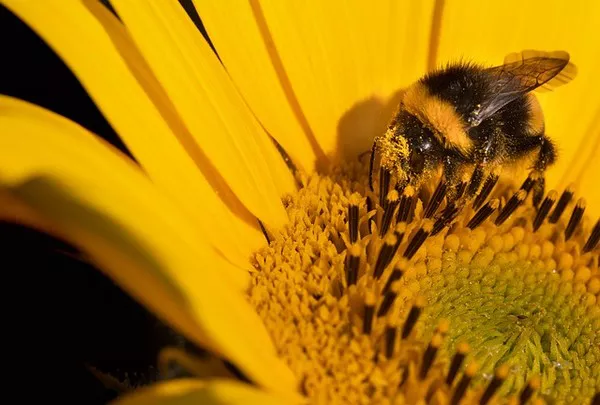Sunflowers, with their vibrant blooms and towering stems, are not only a symbol of radiant beauty but also a staple in gardens worldwide. Cultivating these cheerful flowers can be a rewarding experience, but understanding the optimal duration for their growth is crucial for a successful and flourishing harvest. In this article, we will delve into the various factors influencing the growth timeline of sunflowers and provide valuable insights for enthusiasts looking to nurture these botanical giants.
Variety Matters:
One of the primary factors influencing the duration of sunflower growth is the variety chosen for cultivation. Sunflowers come in various species, each with its unique characteristics and growth patterns. Common varieties include the Giant Sunflower (Helianthus annuus), which can reach heights of up to 15 feet, and the Dwarf Sunflower (Helianthus debilis), a more compact option ideal for smaller gardens.
Giant sunflowers typically have a longer growth period, often taking around 70 to 100 days to reach full maturity from seed germination. On the other hand, dwarf sunflowers have a shorter growth span, usually maturing within 50 to 70 days. It’s essential to choose a variety that aligns with your preferences and the available space in your garden.
Germination and Early Growth:
The journey of a sunflower begins with the germination process. Sunflower seeds are relatively easy to germinate, typically taking 7 to 10 days to sprout under optimal conditions. Planting the seeds directly in the soil or starting them indoors in seed trays are common methods for initiating the germination process.
During the initial stages of growth, sunflowers focus on establishing a robust root system and developing their first set of leaves. Adequate sunlight, well-draining soil, and regular watering are critical during this phase. A sunny location with at least 6 to 8 hours of sunlight per day is ideal for promoting healthy early growth.
Vegetative Growth:
As sunflowers transition from the seedling stage to vegetative growth, their focus shifts to stem development and leaf expansion. This period typically spans from 20 to 50 days, depending on the variety. During this time, sunflowers are highly responsive to environmental conditions, requiring nutrient-rich soil and consistent watering.
Fertilization becomes crucial during the vegetative stage, as sunflowers benefit from a balanced supply of nitrogen, phosphorus, and potassium. Applying a well-balanced fertilizer at the beginning of the growing season and monitoring the plant’s response can contribute to robust vegetative growth.
Blooming Stage:
The blooming stage is undoubtedly the highlight of sunflower cultivation, with the emergence of the iconic, golden-yellow flower heads. The duration of this stage varies among sunflower varieties, but it generally occurs around 70 to 100 days after germination for giant sunflowers and 50 to 70 days for dwarf varieties.
Proper care during the blooming stage is essential for maximizing flower production. Adequate water, sunlight, and a nutrient-rich environment contribute to larger and more vibrant blooms. As the flower heads mature, they begin to follow the sun, a phenomenon known as heliotropism, enhancing their visual appeal.
Harvesting:
Determining the optimal time for harvesting sunflowers is crucial for preserving seed quality and ensuring a bountiful harvest. Harvesting is generally conducted when the back of the sunflower head turns yellow, and the petals start to dry and fall off. For those growing sunflowers for seeds, waiting until the back of the head turns brown and the seeds are plump is advisable.
The harvesting period typically falls within the same time frame as the blooming stage. However, it’s essential to monitor individual plants, as environmental factors and the specific variety can influence the exact timing of harvest. Once harvested, sunflowers can be dried and used for various purposes, such as decoration, bird feed, or even extracting edible seeds.
Environmental Factors:
While understanding the general growth timeline is crucial, it’s equally important to acknowledge the impact of environmental factors on sunflower cultivation. Climate, soil quality, water availability, and sunlight exposure all play integral roles in determining the speed and success of sunflower growth.
Sunflowers thrive in warm climates with temperatures ranging from 70 to 78°F (21 to 26°C). They prefer well-draining soil with a pH level between 6.0 and 7.5. Adequate water, especially during the early stages of growth and blooming, is essential for preventing drought stress.
See Also: How Are Floral Arrangements Used In Christmas?
Conclusion:
In conclusion, the duration to grow sunflowers spans from seed germination to the flowering and harvesting stages. Understanding the specific requirements of the chosen sunflower variety, providing optimal care during each growth phase, and considering environmental factors are key to a successful sunflower cultivation journey. Whether you are a gardening enthusiast or a commercial farmer, the joy of witnessing these radiant flowers reach their full potential is undoubtedly worth the effort invested in their cultivation.


